
by Ria Olivier | Apr 17, 2020 | Antarctica, Legacy, SA Agulhas II, SANAE, SANAP, Science, Take-Over Operations, Women in Science
 Jess Verheul grew up in Johannesburg, South Africa and has always had an affinity for the outdoors, wild and remote places, exploring, surviving and adventuring. She believes she might have been inspired and influenced by her grandparents being farmers; “we spent much time playing outside growing up. I loved being on the farm, and my parents took us on some great safari holidays when we were younger too”. She graduated with a Bachelor of Science degree, specialising in Geography and Environmental Management. In her third year (2009), her mom showed her an article in an old girls school newsletter, an article by a fellow former school girl, who had been in Antarctica as the overwintering Medical Doctor. This sparked a conversation which in turn started a personal obsession…Mission Antarctica, by any means necessary. Her sense of adventure and the will to explore, or a search for depth and resilience to struggle and experience the elements for one’s-self sparked this obsession.
Jess Verheul grew up in Johannesburg, South Africa and has always had an affinity for the outdoors, wild and remote places, exploring, surviving and adventuring. She believes she might have been inspired and influenced by her grandparents being farmers; “we spent much time playing outside growing up. I loved being on the farm, and my parents took us on some great safari holidays when we were younger too”. She graduated with a Bachelor of Science degree, specialising in Geography and Environmental Management. In her third year (2009), her mom showed her an article in an old girls school newsletter, an article by a fellow former school girl, who had been in Antarctica as the overwintering Medical Doctor. This sparked a conversation which in turn started a personal obsession…Mission Antarctica, by any means necessary. Her sense of adventure and the will to explore, or a search for depth and resilience to struggle and experience the elements for one’s-self sparked this obsession.

 Jess completed her Master’s Degree in Environmental Management in 2012 and started working in the corporate consulting world. She relocated to Cape Town in 2014 and got involved as a volunteer firefighter and started experimenting more with creative hobbies like drawing and painting. In 2018 she was offered a volunteer position for the summer takeover to SANAE IV, South Africa’s Antarctic station located on the Vesleskarvet nunatak in Dronning Maud Land. She joined the South African National Space Agency (SANSA) team as a volunteer for the summer takeover expedition. As a member of a team of 10 people for SANSA undertaking upgrades and maintenance at SANAE IV over the summer takeover period from December 2018 to March 2019.
Jess completed her Master’s Degree in Environmental Management in 2012 and started working in the corporate consulting world. She relocated to Cape Town in 2014 and got involved as a volunteer firefighter and started experimenting more with creative hobbies like drawing and painting. In 2018 she was offered a volunteer position for the summer takeover to SANAE IV, South Africa’s Antarctic station located on the Vesleskarvet nunatak in Dronning Maud Land. She joined the South African National Space Agency (SANSA) team as a volunteer for the summer takeover expedition. As a member of a team of 10 people for SANSA undertaking upgrades and maintenance at SANAE IV over the summer takeover period from December 2018 to March 2019.
 “Lacking a good camera but having a desire to experience this incredible place to the fullest, and knowing that drawing is a fantastic meditation; I treated myself to a blank sketchbook and some fine-liner pens before departing on our journey. I like creative expression. It helps me clear my head and experience a place or a situation more deeply.”
“Lacking a good camera but having a desire to experience this incredible place to the fullest, and knowing that drawing is a fantastic meditation; I treated myself to a blank sketchbook and some fine-liner pens before departing on our journey. I like creative expression. It helps me clear my head and experience a place or a situation more deeply.”
The SANSA Team didn’t have to do any work for the 11-day ship journey South, so she spent her time reading several books and did a bit of sketching. On the 19th of December the S.A. Agulhas II was close to the Fimbul Ice-shelf in Dronning Maud Land. Over the summer Jess spent approximately 100 hours in between work and chores, helping out and socialising; drawing, painting and studying the landscapes. “It was an unforgettable experience, one that still feels like a dream. I am ever grateful for the incredible opportunity. Since having spent all that time observing the place, I will remember it deeply for the rest of my days.”

 ANT{INK}TICA : There were initially no plans to publicise her art, but the opportunity was presented by the archivist at Antarctic Legacy of South Africa (ALSA) to publish it in a coffee table book. This is the first art publication from the Antarctic Legacy of South Africa. The book consists of 49 sketches and 3 poems, depicting scenes experienced by Jess during her Antarctic Expedition. Only 100 publications are available and will be signed by the artist. This publication will be a unique addition to Art Book Collections and Antarctic publications. Visit the website www.justjiggs.com to read more about the publication and place an order or contact riaolivier@sun.ac.za for more details.
ANT{INK}TICA : There were initially no plans to publicise her art, but the opportunity was presented by the archivist at Antarctic Legacy of South Africa (ALSA) to publish it in a coffee table book. This is the first art publication from the Antarctic Legacy of South Africa. The book consists of 49 sketches and 3 poems, depicting scenes experienced by Jess during her Antarctic Expedition. Only 100 publications are available and will be signed by the artist. This publication will be a unique addition to Art Book Collections and Antarctic publications. Visit the website www.justjiggs.com to read more about the publication and place an order or contact riaolivier@sun.ac.za for more details.
 Jess’ message to you: “To get out there, challenge yourself. To believe in yourself and your ability. To try new things. Try harder, to judge yourself less and to never give up. To appreciate the experiences and lessons you’ve been endowed with and to help others along their way”. . Jess’ hope is that this book will shine a light for you, to show you that anything is possible. That persistence pays. Magic exists. And every day is a gift. Life is short, don’t waste a second.
Jess’ message to you: “To get out there, challenge yourself. To believe in yourself and your ability. To try new things. Try harder, to judge yourself less and to never give up. To appreciate the experiences and lessons you’ve been endowed with and to help others along their way”. . Jess’ hope is that this book will shine a light for you, to show you that anything is possible. That persistence pays. Magic exists. And every day is a gift. Life is short, don’t waste a second.
Text: Jess Verheul Photo credits: Jess Verheul, Colin de la Harpe, ALSA

by Ria Olivier | Apr 13, 2020 | Antarctica, Geomorphology, Marion Island, Research, Science, sub-Antarctic
 Werner Nel was born and raised in East London. He was educated at the University of Pretoria with a BSc in Earth Sciences: Atmospheric Science, BSc Hons in Environmental Analysis and Management and an MSc and PhD in Geography. His MSc was on the Quaternary landforms on Marion Island (overwintered with M56) while his PhD was on the climate attributes and its geomorphic effect in the Drakensberg.
Werner Nel was born and raised in East London. He was educated at the University of Pretoria with a BSc in Earth Sciences: Atmospheric Science, BSc Hons in Environmental Analysis and Management and an MSc and PhD in Geography. His MSc was on the Quaternary landforms on Marion Island (overwintered with M56) while his PhD was on the climate attributes and its geomorphic effect in the Drakensberg.
Why you love your career in science?


 Very simply for the fact that science take me places and allows me to meet new people. (Above L-R: Aktru Glazier in Siberia, Huangshwen in China, Abisko mountains in Sweden) Since I was a young boy I always yearned for adventure (I still do) and field research gives you that. There are very few careers which allow you to be creative (making maps and figures and writing papers), work with your hands (setting up and maintaining field equipment) and challenges you intellectually. However more importantly, being able to work with people is the best thing about my career. I have had the honour of mentoring some wonderful students, each unique in their personality and approach to life. I have also met some magnificent people through research and travel. My best friends are my research partners and colleagues. I have had the privilege to be on numerous expeditions and travels to far off places with some of the best people, and even though we have different nationalities and come from different cultural backgrounds, I have learned that people are just people and field scientists (young and old) are the best of them all.
Very simply for the fact that science take me places and allows me to meet new people. (Above L-R: Aktru Glazier in Siberia, Huangshwen in China, Abisko mountains in Sweden) Since I was a young boy I always yearned for adventure (I still do) and field research gives you that. There are very few careers which allow you to be creative (making maps and figures and writing papers), work with your hands (setting up and maintaining field equipment) and challenges you intellectually. However more importantly, being able to work with people is the best thing about my career. I have had the honour of mentoring some wonderful students, each unique in their personality and approach to life. I have also met some magnificent people through research and travel. My best friends are my research partners and colleagues. I have had the privilege to be on numerous expeditions and travels to far off places with some of the best people, and even though we have different nationalities and come from different cultural backgrounds, I have learned that people are just people and field scientists (young and old) are the best of them all.
Latest research or study you’re working on ?


 I am involved in many things. (Above fieldwork in Antarctica L-R; Flarjuvan, Robbertskollen and Lorenzpiggen) Firstly, at Fort Hare, I supervise many students across diverse fields of research interests in Geography and Environmental Science and to keep abreast of all this work takes a large chunk of my research time, but is the best part of my job. Then as for my own current research, I am involved in a very exciting collaboration with colleagues from Nanjing University in China where we are looking at the effect of weathering and human activities on heavy metal pollution in the Pearl River Basin. Then I am also involved in some climate and landscape interactions work on Mauritius and it’s off shore islets with SA colleagues (Paul Sumner, David Hedding and Jay le Roux) and our friends from the University of Mauritius and the Mauritian Wildlife Foundation. Then of course my SANAP sub-Antarctic research with Dave Hedding and students are the most important to me. We are currently busy with a number of ongoing research projects on the contemporary periglacial geomorphology of the island. We are also re-examining the glacial reconstruction and timing of deglaciation on Marion Island through the use of new funky cosmogenic dating techniques in collaboration with colleagues from SUERC in Scotland and the British Antarctic Survey.
I am involved in many things. (Above fieldwork in Antarctica L-R; Flarjuvan, Robbertskollen and Lorenzpiggen) Firstly, at Fort Hare, I supervise many students across diverse fields of research interests in Geography and Environmental Science and to keep abreast of all this work takes a large chunk of my research time, but is the best part of my job. Then as for my own current research, I am involved in a very exciting collaboration with colleagues from Nanjing University in China where we are looking at the effect of weathering and human activities on heavy metal pollution in the Pearl River Basin. Then I am also involved in some climate and landscape interactions work on Mauritius and it’s off shore islets with SA colleagues (Paul Sumner, David Hedding and Jay le Roux) and our friends from the University of Mauritius and the Mauritian Wildlife Foundation. Then of course my SANAP sub-Antarctic research with Dave Hedding and students are the most important to me. We are currently busy with a number of ongoing research projects on the contemporary periglacial geomorphology of the island. We are also re-examining the glacial reconstruction and timing of deglaciation on Marion Island through the use of new funky cosmogenic dating techniques in collaboration with colleagues from SUERC in Scotland and the British Antarctic Survey.
Werner’s Message:

 Ja, well there are better paying jobs out there and I guess jobs that give you more status in society (if this is what you are looking for). But I think no other career gives you more freedom to express yourself. Also, unlike what most people think, you don’t need to be particularly clever. Most of the top researchers that I know are just ordinary people that have a passion for what they do and they just put in the time. A willingness to learn (and read), to explore, and not be scared of new things are all you need. Science also allows you to break free from stereotypes and permits (actually insists) you to be who you are. And the rewards are amazing. To see your students graduate and go on to do wonderful things (and be great in their jobs) and to meet truly inspiring and interesting people are way more rewarding I think. And even though it seems that every academic in the universe is perpetually broke you can make a decent living from being an academic. However more importantly, given the flexibility a lot of us enjoy, you can still be there for your family when they need you, and you can always count on a fellow field researcher to buy you a beer.
Ja, well there are better paying jobs out there and I guess jobs that give you more status in society (if this is what you are looking for). But I think no other career gives you more freedom to express yourself. Also, unlike what most people think, you don’t need to be particularly clever. Most of the top researchers that I know are just ordinary people that have a passion for what they do and they just put in the time. A willingness to learn (and read), to explore, and not be scared of new things are all you need. Science also allows you to break free from stereotypes and permits (actually insists) you to be who you are. And the rewards are amazing. To see your students graduate and go on to do wonderful things (and be great in their jobs) and to meet truly inspiring and interesting people are way more rewarding I think. And even though it seems that every academic in the universe is perpetually broke you can make a decent living from being an academic. However more importantly, given the flexibility a lot of us enjoy, you can still be there for your family when they need you, and you can always count on a fellow field researcher to buy you a beer.
Werner Nel is a Professor in the Department of Geography and Environmental Science at the University of Fort Hare. He lectures climatology to first, second and third year students and geomorphology to post-graduates. He has successfully supervised more than 20 Masters students and seven PhD students and serves on the joint International Association of Geomorphology/ International Geographical Union steering committee for Geomorphology and Society and he is a member of the South African National Committee for SCAR. He has been actively involved with SANAP research since 1999 and has been Chief Scientist for shore-based science on relief expeditions to Marion Island and Antarctica.
See profile on Google Scholar and Researchgate and an interview with Russian media at the Aktru research station in Siberia.
Photo Credits: Werner Nel

by Ria Olivier | Apr 2, 2020 | Announcement, Research, SCAR, Science
 The Call for SANAP Proposal submission is 30 April. It is important that within the proposal principal investigators need to look at data management. Below information to help with the proposal.
The Call for SANAP Proposal submission is 30 April. It is important that within the proposal principal investigators need to look at data management. Below information to help with the proposal.
“The amount of time and money required for coding, checking, computerizing, and documenting the data is frequently underestimated in planning a study. Successful data management depends on a sound organization that has mapped out in advance all the data preparation, processing, and documentation steps and is ready to implement these steps when data collection is about to commence. In other words, the data management system should be fully operational before the project gets buried under an avalanche of incoming data that need to be coded, checked, and entered.” Data Collection and Analysis by M Stouthamer-Loeber & W van Kammen .
 The Marine and Antarctic Research Strategy (2016) states that “Data transfer, access and reliability remain a challenge when working in this research sector. Proper centralized management of data emanating from the ocean, Antarctica and the Islands is required to meet both national and international data requirements. Systems that make the data available to national and international users are required. This would require appropriate management, so as to guarantee the integrity of the data. Obviously, reliable access to this data would also be critical.”
The Marine and Antarctic Research Strategy (2016) states that “Data transfer, access and reliability remain a challenge when working in this research sector. Proper centralized management of data emanating from the ocean, Antarctica and the Islands is required to meet both national and international data requirements. Systems that make the data available to national and international users are required. This would require appropriate management, so as to guarantee the integrity of the data. Obviously, reliable access to this data would also be critical.”
The South African Antarctic and Southern Ocean Research Plan. 2014-2024 highlights data dynamics within SANAP. “Data transfer, access and reliability remain a challenge when working in the region. Proper centralized management of data emanating from the Southern Ocean and Antarctic is required, to meet both national and international data requirements. Systems that make the data available to national and international users are required. This would require appropriate management, so as to guarantee the integrity of the data. Obviously, reliable access to this data would also be critical.”
 Scientific Committee on Antarctic Data Management. “Data and information are valuable and irreplaceable resources. Proper management of data and information is not an “add-on” or an additional task; it is a fundamental aspect of modern science”.
Scientific Committee on Antarctic Data Management. “Data and information are valuable and irreplaceable resources. Proper management of data and information is not an “add-on” or an additional task; it is a fundamental aspect of modern science”.
 From the Department of Science and Innovation: “To complement the focus on global infrastructure in South Africa, a South African Research Infrastructure Roadmap (SARIR) has been developed to facilitate a research infrastructure investment programme. At the very least, information and communication technologies and data management services will be a fundamental part of every type of research infrastructure. Data-driven science implies that many of the research teams will base their scientific activity on the processing of collected data and remote access. Data management services are therefore essential to ensure the competitiveness of research groups.”
From the Department of Science and Innovation: “To complement the focus on global infrastructure in South Africa, a South African Research Infrastructure Roadmap (SARIR) has been developed to facilitate a research infrastructure investment programme. At the very least, information and communication technologies and data management services will be a fundamental part of every type of research infrastructure. Data-driven science implies that many of the research teams will base their scientific activity on the processing of collected data and remote access. Data management services are therefore essential to ensure the competitiveness of research groups.”
 NICIS And DIRISA Function within the department of Science and Innovation. The Data Intensive Research Initiative of South Africa(DIRISA) forms part of the National Integrated Cyber Infrastructure System(NICIS). DIRISA aims to Implement a Certified
NICIS And DIRISA Function within the department of Science and Innovation. The Data Intensive Research Initiative of South Africa(DIRISA) forms part of the National Integrated Cyber Infrastructure System(NICIS). DIRISA aims to Implement a Certified Trusted Repository for research data and to operationally deploy and maintain data services and virtual research environments. They aim to initiate the establishment of federated data repositories. DIRISA is required to formulate national strategic frameworks for data intensive research and data stewardship
Trusted Repository for research data and to operationally deploy and maintain data services and virtual research environments. They aim to initiate the establishment of federated data repositories. DIRISA is required to formulate national strategic frameworks for data intensive research and data stewardship
 The Research Management Services of South Africa provide support for qualitative Data Analysis. Qualitative data analysis for empirical and theoretical data for students and staff using ATLAS.ti. They offer analysis for any research project that includes code qualitative data, categorise data, provide thematic reports and offer advice on how to interpret these themes by invoking the theory/literature. (Contact info@rms-sa.org)
The Research Management Services of South Africa provide support for qualitative Data Analysis. Qualitative data analysis for empirical and theoretical data for students and staff using ATLAS.ti. They offer analysis for any research project that includes code qualitative data, categorise data, provide thematic reports and offer advice on how to interpret these themes by invoking the theory/literature. (Contact info@rms-sa.org)
Research Data Alliance announce that with the recent cancellation of Plenary 15 in Melbourne, Australia, the local organising committee, RDA Technical Advisory Board and RDA Secretariat the RDA Virtual Plenary 15 (VP 15), taking place 18 March – 10 April 2020. VP 15 will offer remote access to many of the sessions that were planned to take place in Melbourne.
local organising committee, RDA Technical Advisory Board and RDA Secretariat the RDA Virtual Plenary 15 (VP 15), taking place 18 March – 10 April 2020. VP 15 will offer remote access to many of the sessions that were planned to take place in Melbourne.

by Ria Olivier | Mar 22, 2020 | SA Agulhas II, SANAP, Science, Southern Ocean
The Mid-Month series final for March is reflecting on Science projects on Sunday. The Sound and Vibration Research Group (SVRG) in the Department of Mechanical and Mechatronic Engineering is a SANAP research project. The SVRG has established expertise, equipment and laboratory facilities to conduct research and investigations into noise and vibration problems for industry as well as the public sector. Our primary field of research is associated with human response to sound and vibration where, in particular, seating dynamics and sound quality are investigated. Prof Annie Bekker is the Principal Investigator of the South African National Antarctic Programme (SANAP) – Decision aiding for the SA Agulhas II through modelling, monitoring and data capture.
is a SANAP research project. The SVRG has established expertise, equipment and laboratory facilities to conduct research and investigations into noise and vibration problems for industry as well as the public sector. Our primary field of research is associated with human response to sound and vibration where, in particular, seating dynamics and sound quality are investigated. Prof Annie Bekker is the Principal Investigator of the South African National Antarctic Programme (SANAP) – Decision aiding for the SA Agulhas II through modelling, monitoring and data capture.
Vibration and acoustic comfort on the polar supply and research vessel – S.A. AGULHAS II
 As part of an international research consortium between the Universities of Aalto and Oulo, Aker Arctic, Det Norske Veritas, Rolls Royce, Wartsila and STX Europe the SVRG performed vibration comfort measurements on board the SA Agulhas II, the new polar supply research vessel. The SA Agulhas II was put to the test during two days of ice-breaking operations in the Bay of Bothnia in Finland during ice-trails as well as a 76-day voyage between Cape Town and Antarctica. Sound levels and vibration comfort will be determined in conjunction with exterior ice conditions and ice-loads on the ship hull in an on-going research project which enables a unique comparison between Arctic and Antarctic conditions.
As part of an international research consortium between the Universities of Aalto and Oulo, Aker Arctic, Det Norske Veritas, Rolls Royce, Wartsila and STX Europe the SVRG performed vibration comfort measurements on board the SA Agulhas II, the new polar supply research vessel. The SA Agulhas II was put to the test during two days of ice-breaking operations in the Bay of Bothnia in Finland during ice-trails as well as a 76-day voyage between Cape Town and Antarctica. Sound levels and vibration comfort will be determined in conjunction with exterior ice conditions and ice-loads on the ship hull in an on-going research project which enables a unique comparison between Arctic and Antarctic conditions.
One of SVRG objectives is to establish a centre of expertise in sound and vibration measurement, analysis and assessment with the associated measurement equipment and software tools to contribute to the international research arena. Annie Bekker host an annual Symposium on the S.A. Agulhas II where international and national stakeholders give new insight and feedback on research. During the symposium students of the SVRG also get the time to present their research. To open the minds of these students and to taught them the necessary skills Annie Bekker make use of expertise from all over the world.
assessment with the associated measurement equipment and software tools to contribute to the international research arena. Annie Bekker host an annual Symposium on the S.A. Agulhas II where international and national stakeholders give new insight and feedback on research. During the symposium students of the SVRG also get the time to present their research. To open the minds of these students and to taught them the necessary skills Annie Bekker make use of expertise from all over the world.
SVRG recently hosted Professor Anders Brandt from the University of Southern Denmark.
“ABRAVIBE(s)”… data-driven skills, taught by a master

Prof A Brandt
He is the author of the book “Noise and Vibration Analysis” and the MATLAB Toolbox, “ABRAVIBE” – renowned for its open code which demystifies many aspects of signal processing. Professor Brandt up-skilled students from the SVRG in select topics related to data quality control and signal processing. Three days were spent on a deep dive into theory, balanced by practical application. An essential skill of any vibration engineer is “to know how to hit a structure with a hammer”.
aspects of signal processing. Professor Brandt up-skilled students from the SVRG in select topics related to data quality control and signal processing. Three days were spent on a deep dive into theory, balanced by practical application. An essential skill of any vibration engineer is “to know how to hit a structure with a hammer”.
Under the leadership of Prof Annie Bekker, the SVRG will apply their brushed-up techniques to implement several data-driven digital services for the SA Agulhas II, South Africa’s polar supply and research vessel. The collective effort, entitled “DIGSAA” embraces Industry 4.0 technologies to enhance ship management and operation in the Southern Ocean and Antarctica. Accordingly, the visit of Prof Brandt has instilled a rigorous signal processing background to equip the group for this momentous task.

Prof Brandt and SVRG ready to work. Front (l-r): Karl Pferdkamper, Jandre Mouton, Ben Steyn. Middle: Jaco Laas, Armand van Zuydam, Martinique Engelbrecht, Prof Bekker, Prof Brandt, Nic Bunn, Nicole Taylor, Jesslyn Bossau. Back: Christof van Zijl and Brendon Nickerson.

Professor Brandt, shares how a modal hammer is used to measure calibrated acceleration responses on this beam structure. Jaco Laas, M.Eng (left) and Brendon Nickerson, PhD (right).

Ben Steyn (M.Eng) is perfecting hammer skills on an experimental set up.

Celebrating a successful week of signal processing and modal analysis.

by Ria Olivier | Mar 21, 2020 | Research, SANAP, SANAP Student, Science, Southern Ocean, Women in Science
Every year new students are joining the South African National Antarctic Programme(SANAP). As Saturday is probably the time to break from studies, our first “Saturday Student” in the Mid-Month series is Kolisa Yola Sinyanya or for those who are familiar with Twitter, @Kolie_Yola. I think there are not many students out there with 7070 followers (during writing of this article) – but Kolisa does. She joined the Antarctic Legacy of South Africa (ALSA) Project and contributes towards our social media campaign, therefore letting more people know about South Africa’s involvement in the Antarctic and Southern Ocean region. Upon joining ALSA, Kolisa was set to be part of the South African group to attend the SCAR biennial conference in August 2020 in Hobart, Australia(but now cancelled).
probably the time to break from studies, our first “Saturday Student” in the Mid-Month series is Kolisa Yola Sinyanya or for those who are familiar with Twitter, @Kolie_Yola. I think there are not many students out there with 7070 followers (during writing of this article) – but Kolisa does. She joined the Antarctic Legacy of South Africa (ALSA) Project and contributes towards our social media campaign, therefore letting more people know about South Africa’s involvement in the Antarctic and Southern Ocean region. Upon joining ALSA, Kolisa was set to be part of the South African group to attend the SCAR biennial conference in August 2020 in Hobart, Australia(but now cancelled).
 She is a PhD candidate in Oceanography at the University of Cape Town (UCT). Her PhD research is part of a growing body of work that critically examines bio-geochemical cycling in the ocean, particularly regions that are currently under-sampled. The research aims involve exploring phytoplankton community dynamics and microbe-nutrient interactions in the Indian Ocean, including subtropical and Southern Ocean waters. To date, Kolisa has been awarded the Advancing Womxn Fellowship in the Department of Oceanography awarded under the “For womxn by womxn: conducting research in a field in which womxn are in short supply” category of a new initiative at UCT championed by the Office of the Vice-Chancellor. She is one of the researchers who were on 5-week cruise to Marion Island in the Sub-Antarctic Indian Ocean in 2017.
She is a PhD candidate in Oceanography at the University of Cape Town (UCT). Her PhD research is part of a growing body of work that critically examines bio-geochemical cycling in the ocean, particularly regions that are currently under-sampled. The research aims involve exploring phytoplankton community dynamics and microbe-nutrient interactions in the Indian Ocean, including subtropical and Southern Ocean waters. To date, Kolisa has been awarded the Advancing Womxn Fellowship in the Department of Oceanography awarded under the “For womxn by womxn: conducting research in a field in which womxn are in short supply” category of a new initiative at UCT championed by the Office of the Vice-Chancellor. She is one of the researchers who were on 5-week cruise to Marion Island in the Sub-Antarctic Indian Ocean in 2017.
Kolisa has a passion for learning science and for sharing her science, and her PhD has allowed Kolisa to engage  in effective science communication through public speaking, scientific writing and television features. In February of 2020, she presented one of her PhD chapters at Ocean Sciences Meeting in San Diego, USA. Towards the end of 2019, the new Advancing Womxn: Ocean Womxn Fellowship at UCT recruited Kolisa to run and manage their social media accounts as a science communicator. She was one of the invited African scientists who gave ocean and climate change related talks at #VirtualBlueCOP25. In the same year Kolisa was nominated as one of the Inspiring Fifty Women in STEM South Africa and became a Black Women in Science South Africa 2019 fellow. Kolisa was the first PhD candidate in history to be selected by the Oceanography Department’s head of department (HoD), Professor Isabelle Ansorge to stand in for her as acting HoD at a departmental graduation ceremony in 2019.
in effective science communication through public speaking, scientific writing and television features. In February of 2020, she presented one of her PhD chapters at Ocean Sciences Meeting in San Diego, USA. Towards the end of 2019, the new Advancing Womxn: Ocean Womxn Fellowship at UCT recruited Kolisa to run and manage their social media accounts as a science communicator. She was one of the invited African scientists who gave ocean and climate change related talks at #VirtualBlueCOP25. In the same year Kolisa was nominated as one of the Inspiring Fifty Women in STEM South Africa and became a Black Women in Science South Africa 2019 fellow. Kolisa was the first PhD candidate in history to be selected by the Oceanography Department’s head of department (HoD), Professor Isabelle Ansorge to stand in for her as acting HoD at a departmental graduation ceremony in 2019.
 She has taken part in several science communication activities, including FameLab Cape Town, the biggest science communication competition in the world, where she was the Cape Town national runner up. Other thought- and conversation-provoking science communication engagements in which Kolisa has participated in are Pint of Science South Africa and TEDxUCT. Moreover, she presented the preliminary findings of her Agulhas System Climate Array (ASCA) research at the 2018 SANAP Symposium. Kolisa’s work has also been documented in the academic communication magazine, The Conversation Africa. She’s committed to increasing the visibility of women in STEM and runs a blog called Women In Science Hub where she write about conversations she has with women who are making waves in the world of STEM. In 2018, Kolisa had the privilege to be interviewed as a woman in science under the theme “#SHEsInSTEM” by the women’s organisation, Young&BosSHE, based in the United States. In 2019, her sci comm work was featured by Crastina in Sweden under the theme Science Communication Africa. As a student leader, she was invited by the Vice-Chancellor of the University of Cape Town, Professor Mamokgethi Phakeng, to participate in a Women’s Day discussion on Power FM about South African universities. In 2019 she was invited for live interviews twice by Cape Town TV to speak about Oceanography and on Women’s Month to speak about being a black woman in STEM. Visit Kolisa’s budding YouTube channel and leave a comment.
She has taken part in several science communication activities, including FameLab Cape Town, the biggest science communication competition in the world, where she was the Cape Town national runner up. Other thought- and conversation-provoking science communication engagements in which Kolisa has participated in are Pint of Science South Africa and TEDxUCT. Moreover, she presented the preliminary findings of her Agulhas System Climate Array (ASCA) research at the 2018 SANAP Symposium. Kolisa’s work has also been documented in the academic communication magazine, The Conversation Africa. She’s committed to increasing the visibility of women in STEM and runs a blog called Women In Science Hub where she write about conversations she has with women who are making waves in the world of STEM. In 2018, Kolisa had the privilege to be interviewed as a woman in science under the theme “#SHEsInSTEM” by the women’s organisation, Young&BosSHE, based in the United States. In 2019, her sci comm work was featured by Crastina in Sweden under the theme Science Communication Africa. As a student leader, she was invited by the Vice-Chancellor of the University of Cape Town, Professor Mamokgethi Phakeng, to participate in a Women’s Day discussion on Power FM about South African universities. In 2019 she was invited for live interviews twice by Cape Town TV to speak about Oceanography and on Women’s Month to speak about being a black woman in STEM. Visit Kolisa’s budding YouTube channel and leave a comment.
 Kolisa is also a fun loving, unconventional and free-spirited woman who has a passion for advancing the lives of others, especially young women and girls from all walks of life. Her message to fellow students:
Kolisa is also a fun loving, unconventional and free-spirited woman who has a passion for advancing the lives of others, especially young women and girls from all walks of life. Her message to fellow students: 
- Believe in your contributions because no one else is like you, you bring to the table a combination of things the next person will not.
- Be in love with and have passion for your career because if you don’t your path within that career will be a chore.
- Never give up because winners never quit, and quitters never win.
- Go for your dreams. Never let anything/anyone discourage you from reaching and far surpassing those set goals.

by Ria Olivier | Mar 18, 2020 | Discover, Jobs, Legacy, Marion Island, Research, SANAP, SCAR, Science
I completed all my science degrees at the University of Pretoria after some time at Wits studying law. I was fortunate to be appointed at Stellenbosch University in 2000, spent 2001 in France, and returned to Stellenbosch University in 2002 where I worked first as a Senior Technical Officer, then as a Researcher and finally an Associate Professor before relocating to the University of Johannesburg in 2011,  and became a Full Professor in 2012. Our research group at UJ transitioned into a Research Centre, and we currently house a number of postdoctoral fellows and postgraduate students. We have collaborations with a number of groups both within South Africa, and internationally.
and became a Full Professor in 2012. Our research group at UJ transitioned into a Research Centre, and we currently house a number of postdoctoral fellows and postgraduate students. We have collaborations with a number of groups both within South Africa, and internationally.
I have been involved in research on the Prince Edward  Islands since 2004 and have been fortunate to work with some of the legends as well as bright upcoming researchers (then students, now fully established and leading their own research groups). For my sins, I was appointed as Chief shore-based Scientist in 2006 (the first time that a woman held this position), and managed to get all people to relevant huts on time, even though we almost had to put together a rescue party to retrieve Valdon Smith and Sarette Slabber from Mixed Pickle (typical Marion Island bad weather meant that they could not walk over Azorella Kop). Thankfully the weather cleared, and all shore-based people made it back to the SA Agulhas I.
Islands since 2004 and have been fortunate to work with some of the legends as well as bright upcoming researchers (then students, now fully established and leading their own research groups). For my sins, I was appointed as Chief shore-based Scientist in 2006 (the first time that a woman held this position), and managed to get all people to relevant huts on time, even though we almost had to put together a rescue party to retrieve Valdon Smith and Sarette Slabber from Mixed Pickle (typical Marion Island bad weather meant that they could not walk over Azorella Kop). Thankfully the weather cleared, and all shore-based people made it back to the SA Agulhas I.
Bettine van Vuuren is currently the Chair of the South African National Committee for SCAR, and a Principal Investigator in the South African National Antarctic Programme (SANAP) – see Biocomplexity: Understanding biological patterns in space and time.
Why you love your career in science?
I have always thought that animals are interesting and wondered why they act in certain ways. Why do some dogs get on well, while others fight? How do bees know where to find  flowers and pollen, and how do they get back to their hives? Are they really all female? Why are some species so successful while others are continuously threatened and faced with extinction; especially considering that our world is changing much faster than ever before?
flowers and pollen, and how do they get back to their hives? Are they really all female? Why are some species so successful while others are continuously threatened and faced with extinction; especially considering that our world is changing much faster than ever before? 
Once I understood that the answers to most of these questions have a strong genetic basis, I was hooked. My work allows me to search for the answers to many of these questions, and I work in some of the most extraordinary and beautiful places on earth (from our hot and dry desert and semi-desert regions to extremely wet and cold sub-Antarctic islands). I am privileged to work and interact with extremely talented people (both within and outside South Africa; old and young); there is not a day that I am not thankful for the way my life turned out. What is perhaps the strongest motivating factor is that I can make a difference in the lives of younger people (through education, working at the University of Johannesburg), and this is priceless.
Why you believe more women should pursue a career in science?
The first thing to say is that I believe there is nothing that any person can’t do if they apply their mind (and time) to it. We often set our own ceilings based on the general beliefs that society  or others impose on us; and it is crucial that we break through these (non-real) boundaries. STEM fields are a case in hand. This is especially true for woman, who traditionally were considered homemakers or child-carers. In STEM specifically, fields such as mathematics, physics and engineering, and traditionally more field-based disciplines such as zoology, botany, or oceanography, are seen as more suited to men (either because women were not traditionally considered as analytically strong, capable to work in the field, or for that matter, be away from home for any period of time). It is critical that any person (both men and women) should carefully consider what they enjoy, what their specific strengths are (be that a STEM career for a woman, or as a child carer / homemaker for a man), and then pursue that with all their strength and passion. Personally, I was initially directed into a field that I had no interest in (because I could not answer questions asked regarding where I would work if my husband lived in a small town), and from a personal perspective I strongly urge and support woman that want to step out of the “beaten track”, i.e., what is typically expected from you by society, and follow what they are passionate about.
or others impose on us; and it is crucial that we break through these (non-real) boundaries. STEM fields are a case in hand. This is especially true for woman, who traditionally were considered homemakers or child-carers. In STEM specifically, fields such as mathematics, physics and engineering, and traditionally more field-based disciplines such as zoology, botany, or oceanography, are seen as more suited to men (either because women were not traditionally considered as analytically strong, capable to work in the field, or for that matter, be away from home for any period of time). It is critical that any person (both men and women) should carefully consider what they enjoy, what their specific strengths are (be that a STEM career for a woman, or as a child carer / homemaker for a man), and then pursue that with all their strength and passion. Personally, I was initially directed into a field that I had no interest in (because I could not answer questions asked regarding where I would work if my husband lived in a small town), and from a personal perspective I strongly urge and support woman that want to step out of the “beaten track”, i.e., what is typically expected from you by society, and follow what they are passionate about.
Latest research or study you’re working on?
 I am currently involved in a number of larger projects which aim to understand how species (individuals / populations) respond to change. One such project is on sub-Antarctic Marion Island (funded through the South African National Antarctic Programme), where we are assembling the full genomes of a number of macroinvertebrate species, with the ultimate aim to understand genes under selection, and how biotic and abiotic factors shape the genetic diversity on oceanic islands. In South Africa, and in collaboration with national (SANBI) and international partners (an NSF/NRF funded project), we are investigating how reptile species adapt to changing and transformed landscapes, and what the downstream impacts are on their genes, morphology and behaviour. Across the African continent, and in collaboration with the Research Centre in Biodiversity and Genetic Resources (Portugal), we are documenting the spatial genetic patterns in a number of economically important larger antelope species (such as roan- and sable antelope); our work here directly informs South African policies on translocations.
I am currently involved in a number of larger projects which aim to understand how species (individuals / populations) respond to change. One such project is on sub-Antarctic Marion Island (funded through the South African National Antarctic Programme), where we are assembling the full genomes of a number of macroinvertebrate species, with the ultimate aim to understand genes under selection, and how biotic and abiotic factors shape the genetic diversity on oceanic islands. In South Africa, and in collaboration with national (SANBI) and international partners (an NSF/NRF funded project), we are investigating how reptile species adapt to changing and transformed landscapes, and what the downstream impacts are on their genes, morphology and behaviour. Across the African continent, and in collaboration with the Research Centre in Biodiversity and Genetic Resources (Portugal), we are documenting the spatial genetic patterns in a number of economically important larger antelope species (such as roan- and sable antelope); our work here directly informs South African policies on translocations.

Student: Daniela Monsanto

Colleagues & Students at a conference
Students often ask me about their future careers, what they can do with a BSc degree (or broader, a Science degree), or where they will find employment. And my answer is always the same: You can be whatever you want to be. The ultimate aim of science education should be to train students to critically assess situations, to learn how to solve complex problems, and to find solutions to questions. If you have mastered this skill, you can become the President of South Africa, an artisan, an entrepreneur, or a brilliant scientist.
Presentation on Youtube: UJ zoologist on the management and eradication of invasive species
Profile on Wikipedia and on Researchgate
Follow Bettine on Twitter @bettinevv
Visit  website www.molzoolab.co.za
website www.molzoolab.co.za
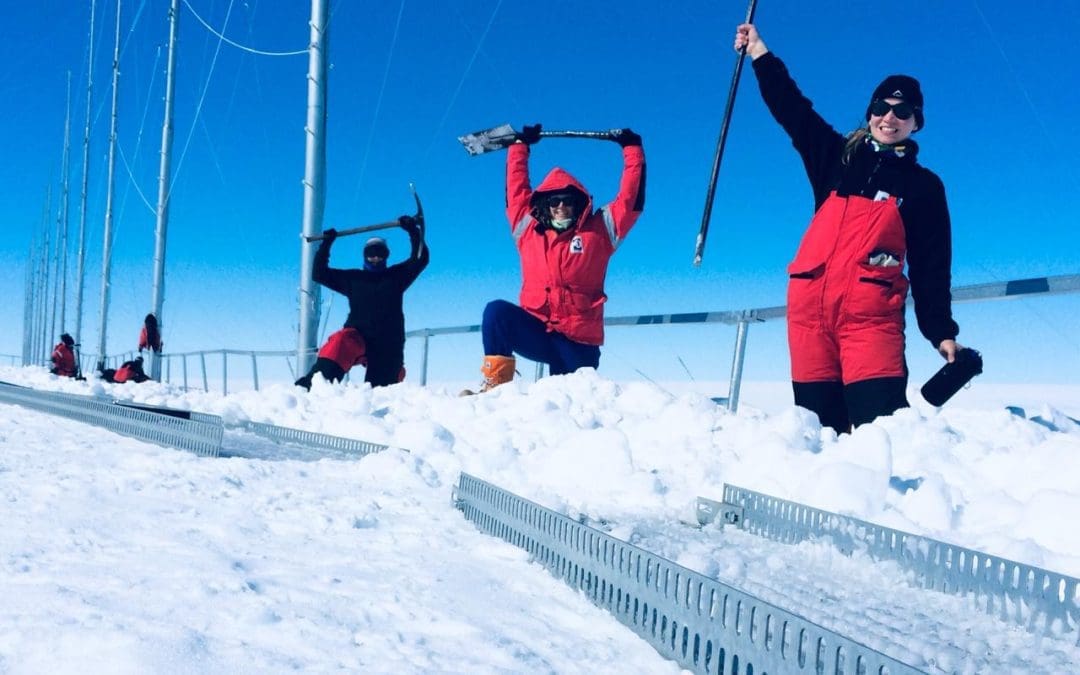
 Jess Verheul grew up in Johannesburg, South Africa and has always had an affinity for the outdoors, wild and remote places, exploring, surviving and adventuring. She believes she might have been inspired and influenced by her grandparents being farmers; “we spent much time playing outside growing up. I loved being on the farm, and my parents took us on some great safari holidays when we were younger too”. She graduated with a Bachelor of Science degree, specialising in Geography and Environmental Management. In her third year (2009), her mom showed her an article in an old girls school newsletter, an article by a fellow former school girl, who had been in Antarctica as the overwintering Medical Doctor. This sparked a conversation which in turn started a personal obsession…Mission Antarctica, by any means necessary. Her sense of adventure and the will to explore, or a search for depth and resilience to struggle and experience the elements for one’s-self sparked this obsession.
Jess Verheul grew up in Johannesburg, South Africa and has always had an affinity for the outdoors, wild and remote places, exploring, surviving and adventuring. She believes she might have been inspired and influenced by her grandparents being farmers; “we spent much time playing outside growing up. I loved being on the farm, and my parents took us on some great safari holidays when we were younger too”. She graduated with a Bachelor of Science degree, specialising in Geography and Environmental Management. In her third year (2009), her mom showed her an article in an old girls school newsletter, an article by a fellow former school girl, who had been in Antarctica as the overwintering Medical Doctor. This sparked a conversation which in turn started a personal obsession…Mission Antarctica, by any means necessary. Her sense of adventure and the will to explore, or a search for depth and resilience to struggle and experience the elements for one’s-self sparked this obsession.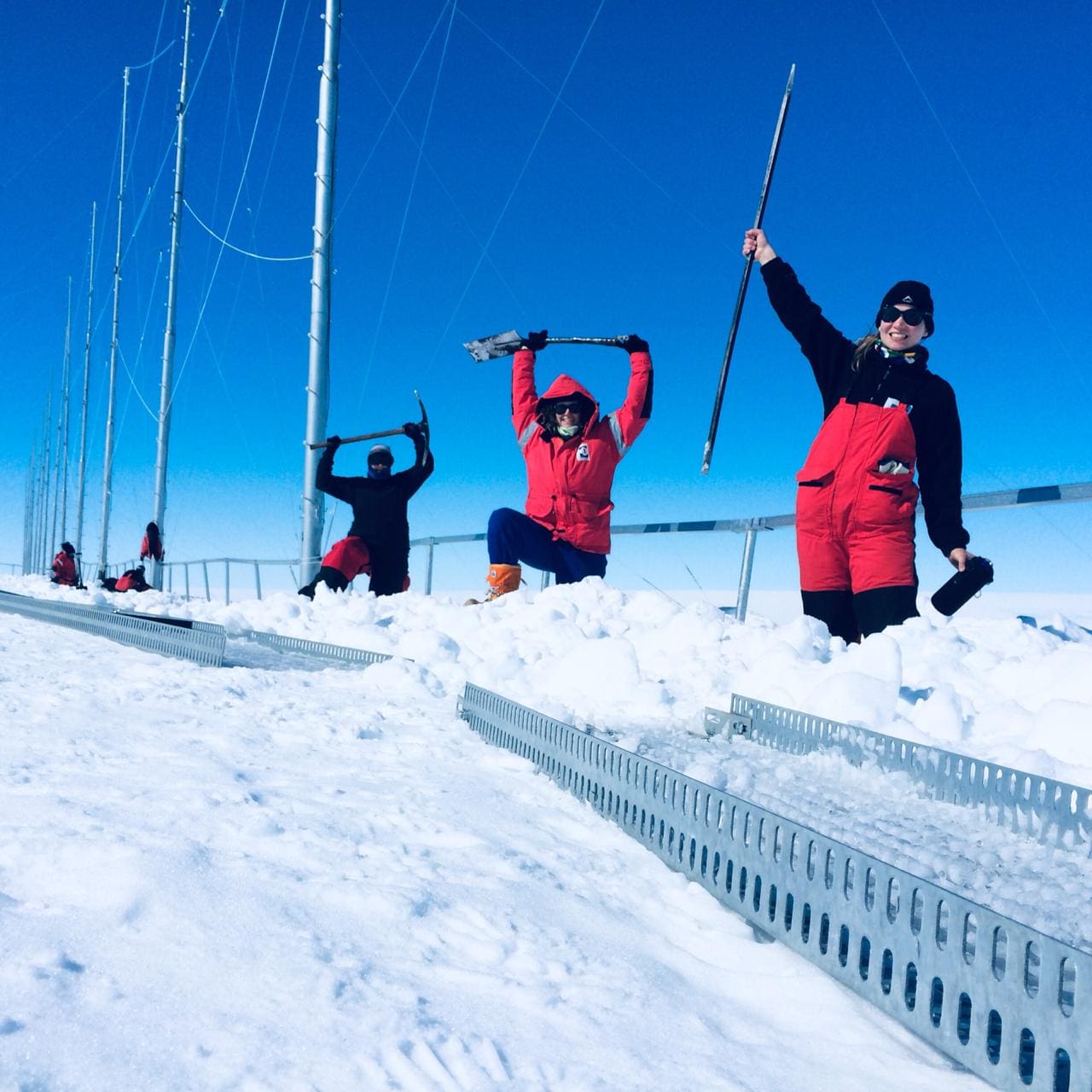
 Jess completed her Master’s Degree in Environmental Management in 2012 and started working in the corporate consulting world. She relocated to Cape Town in 2014 and got involved as a volunteer firefighter and started experimenting more with creative hobbies like drawing and painting. In 2018 she was offered a volunteer position for the summer takeover to SANAE IV, South Africa’s Antarctic station located on the Vesleskarvet nunatak in Dronning Maud Land. She joined the South African National Space Agency (SANSA) team as a volunteer for the summer takeover expedition. As a member of a team of 10 people for SANSA undertaking upgrades and maintenance at SANAE IV over the summer takeover period from December 2018 to March 2019.
Jess completed her Master’s Degree in Environmental Management in 2012 and started working in the corporate consulting world. She relocated to Cape Town in 2014 and got involved as a volunteer firefighter and started experimenting more with creative hobbies like drawing and painting. In 2018 she was offered a volunteer position for the summer takeover to SANAE IV, South Africa’s Antarctic station located on the Vesleskarvet nunatak in Dronning Maud Land. She joined the South African National Space Agency (SANSA) team as a volunteer for the summer takeover expedition. As a member of a team of 10 people for SANSA undertaking upgrades and maintenance at SANAE IV over the summer takeover period from December 2018 to March 2019.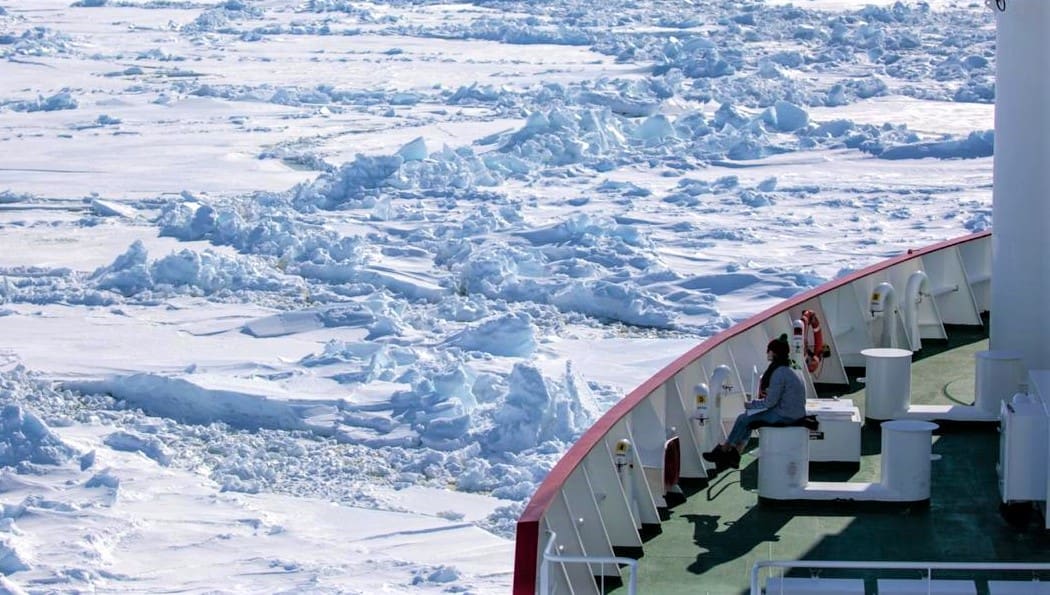 “Lacking a good camera but having a desire to experience this incredible place to the fullest, and knowing that drawing is a fantastic meditation; I treated myself to a blank sketchbook and some fine-liner pens before departing on our journey. I like creative expression. It helps me clear my head and experience a place or a situation more deeply.”
“Lacking a good camera but having a desire to experience this incredible place to the fullest, and knowing that drawing is a fantastic meditation; I treated myself to a blank sketchbook and some fine-liner pens before departing on our journey. I like creative expression. It helps me clear my head and experience a place or a situation more deeply.”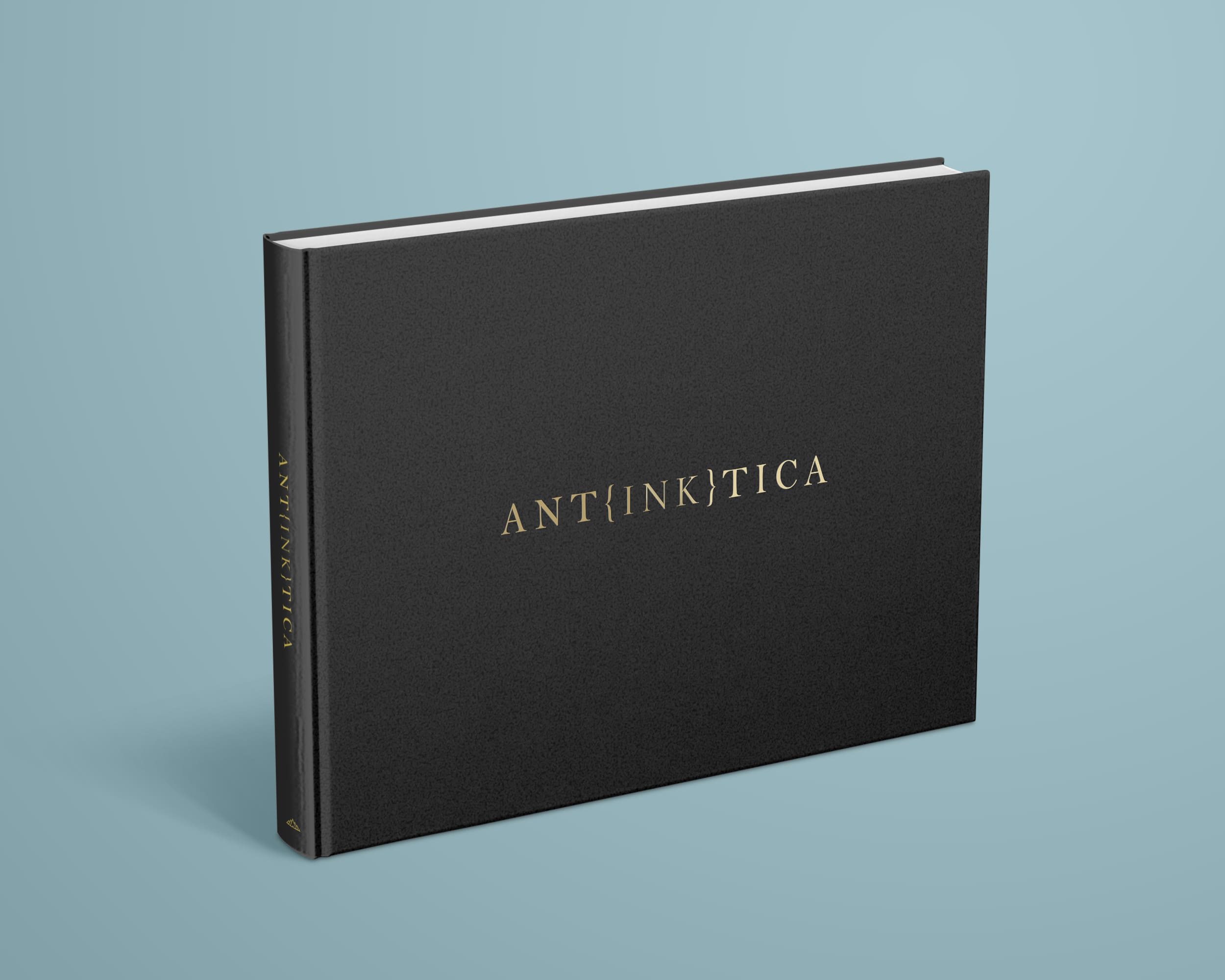
 ANT{INK}TICA : There were initially no plans to publicise her art, but the opportunity was presented by the archivist at Antarctic Legacy of South Africa (ALSA) to publish it in a coffee table book. This is the first art publication from the Antarctic Legacy of South Africa. The book consists of 49 sketches and 3 poems, depicting scenes experienced by Jess during her Antarctic Expedition. Only 100 publications are available and will be signed by the artist. This publication will be a unique addition to Art Book Collections and Antarctic publications. Visit the website www.justjiggs.com to read more about the publication and place an order or contact riaolivier@sun.ac.za for more details.
ANT{INK}TICA : There were initially no plans to publicise her art, but the opportunity was presented by the archivist at Antarctic Legacy of South Africa (ALSA) to publish it in a coffee table book. This is the first art publication from the Antarctic Legacy of South Africa. The book consists of 49 sketches and 3 poems, depicting scenes experienced by Jess during her Antarctic Expedition. Only 100 publications are available and will be signed by the artist. This publication will be a unique addition to Art Book Collections and Antarctic publications. Visit the website www.justjiggs.com to read more about the publication and place an order or contact riaolivier@sun.ac.za for more details.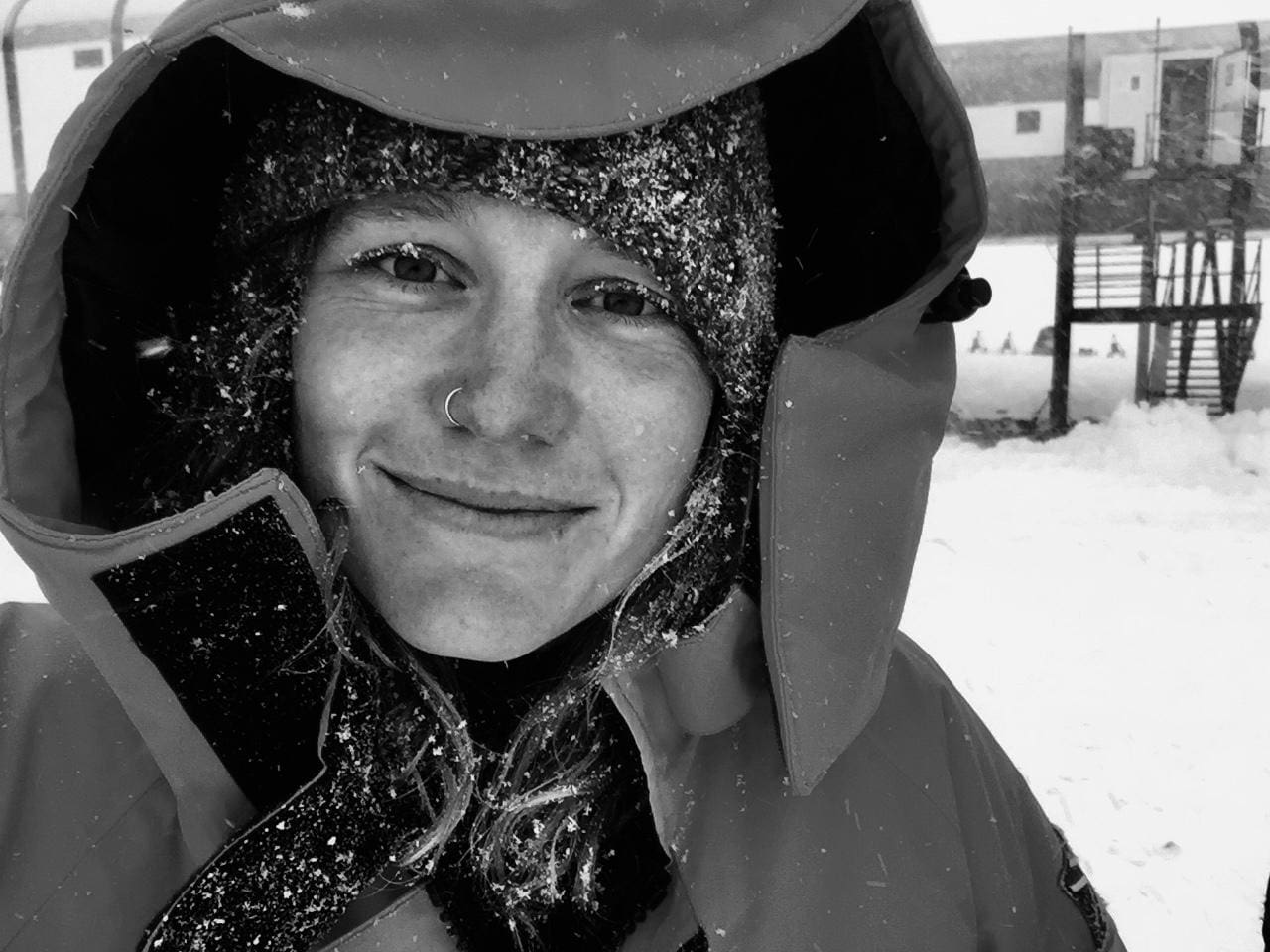 Jess’ message to you: “To get out there, challenge yourself. To believe in yourself and your ability. To try new things. Try harder, to judge yourself less and to never give up. To appreciate the experiences and lessons you’ve been endowed with and to help others along their way”. . Jess’ hope is that this book will shine a light for you, to show you that anything is possible. That persistence pays. Magic exists. And every day is a gift. Life is short, don’t waste a second.
Jess’ message to you: “To get out there, challenge yourself. To believe in yourself and your ability. To try new things. Try harder, to judge yourself less and to never give up. To appreciate the experiences and lessons you’ve been endowed with and to help others along their way”. . Jess’ hope is that this book will shine a light for you, to show you that anything is possible. That persistence pays. Magic exists. And every day is a gift. Life is short, don’t waste a second.

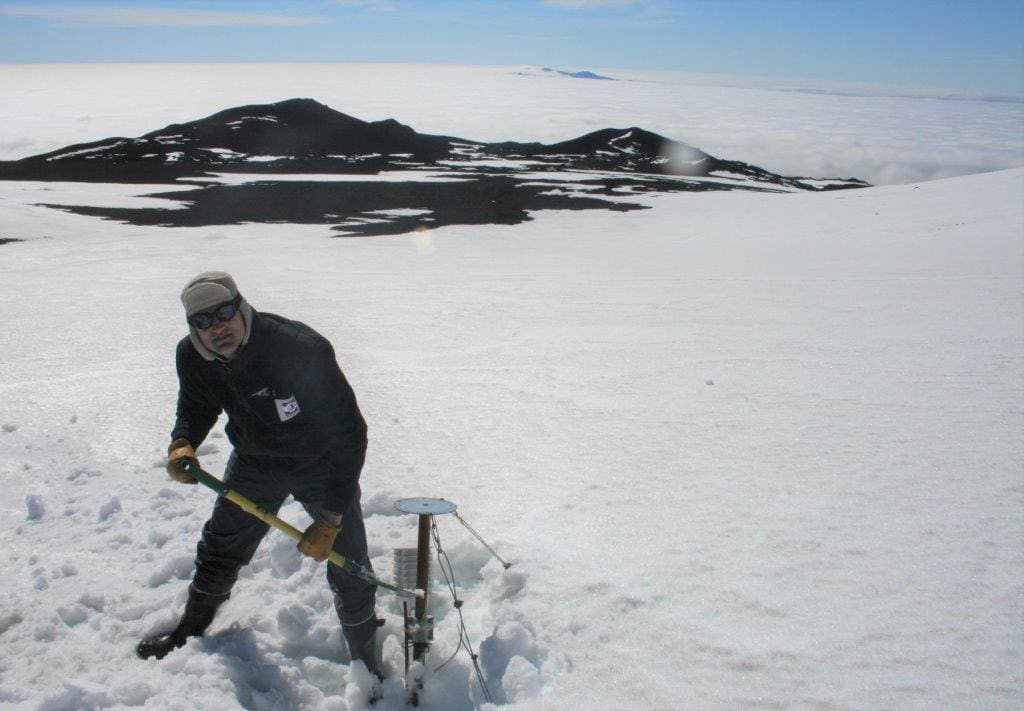 Werner Nel was born and raised in East London. He was educated at the University of Pretoria with a BSc in Earth Sciences: Atmospheric Science, BSc Hons in Environmental Analysis and Management and an MSc and PhD in Geography. His MSc was on the Quaternary landforms on Marion Island (overwintered with M56) while his PhD was on the climate attributes and its geomorphic effect in the Drakensberg.
Werner Nel was born and raised in East London. He was educated at the University of Pretoria with a BSc in Earth Sciences: Atmospheric Science, BSc Hons in Environmental Analysis and Management and an MSc and PhD in Geography. His MSc was on the Quaternary landforms on Marion Island (overwintered with M56) while his PhD was on the climate attributes and its geomorphic effect in the Drakensberg.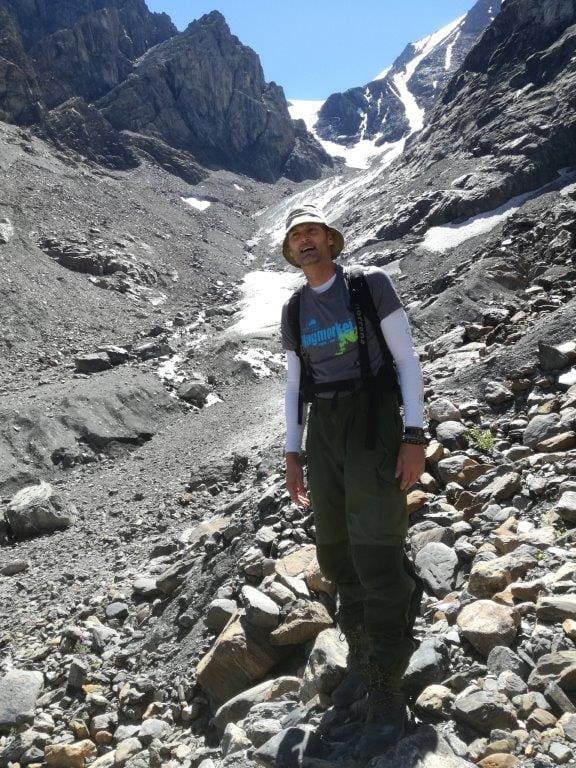
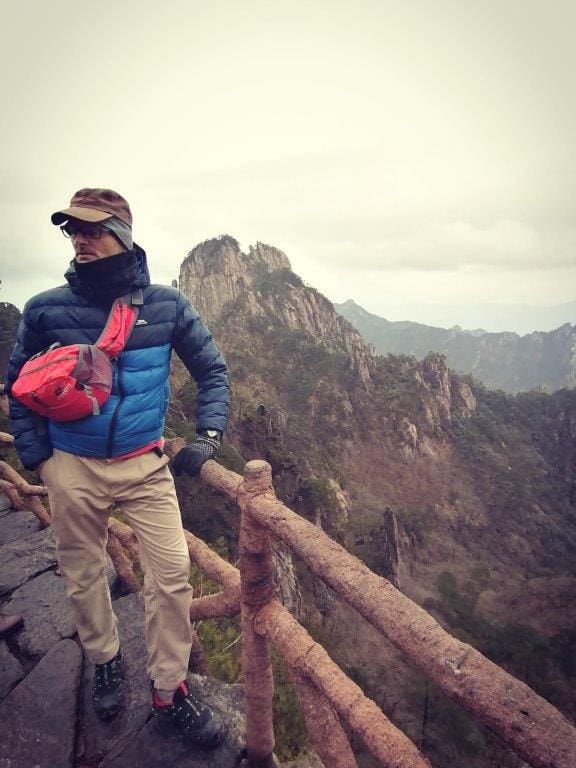
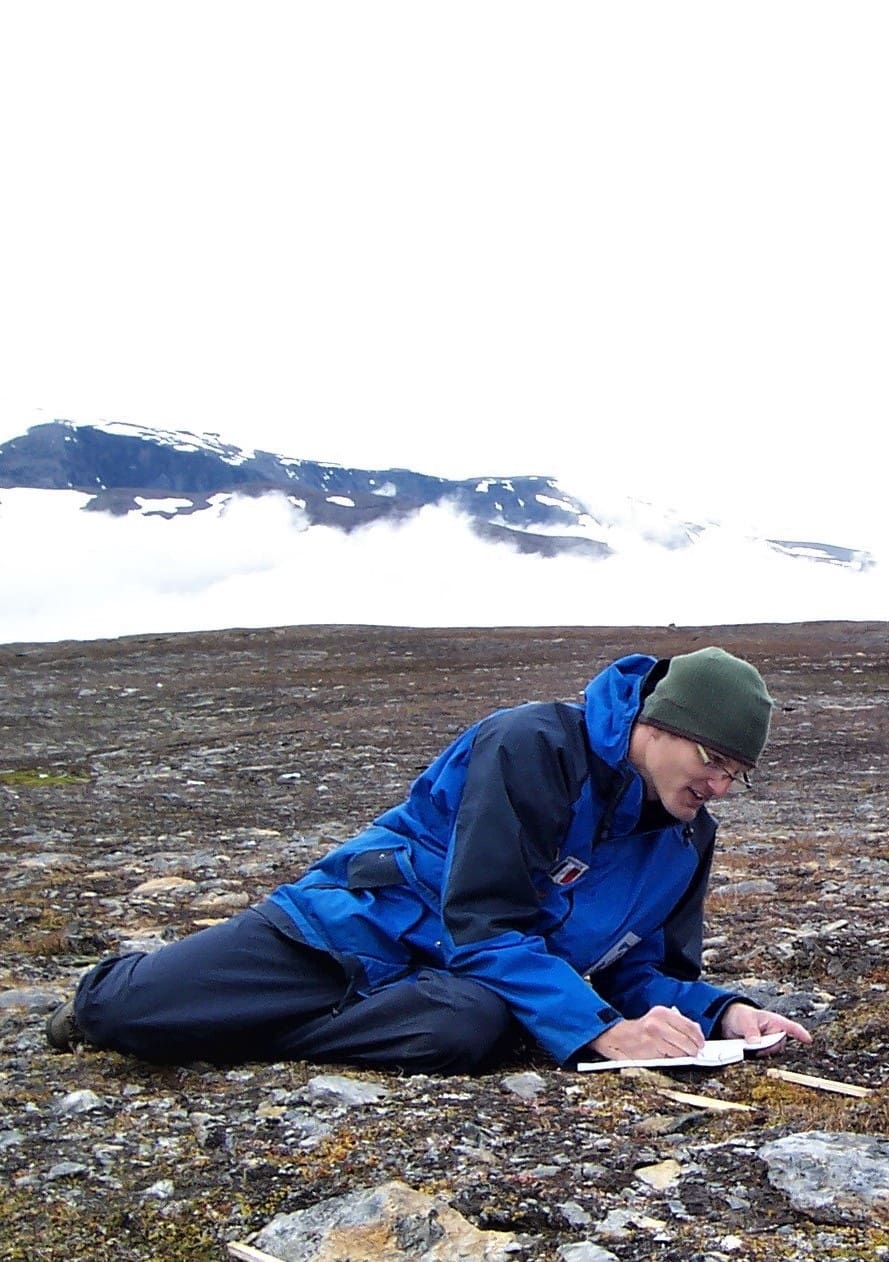 Very simply for the fact that science take me places and allows me to meet new people. (Above L-R: Aktru Glazier in Siberia, Huangshwen in China, Abisko mountains in Sweden) Since I was a young boy I always yearned for adventure (I still do) and field research gives you that. There are very few careers which allow you to be creative (making maps and figures and writing papers), work with your hands (setting up and maintaining field equipment) and challenges you intellectually. However more importantly, being able to work with people is the best thing about my career. I have had the honour of mentoring some wonderful students, each unique in their personality and approach to life. I have also met some magnificent people through research and travel. My best friends are my research partners and colleagues. I have had the privilege to be on numerous expeditions and travels to far off places with some of the best people, and even though we have different nationalities and come from different cultural backgrounds, I have learned that people are just people and field scientists (young and old) are the best of them all.
Very simply for the fact that science take me places and allows me to meet new people. (Above L-R: Aktru Glazier in Siberia, Huangshwen in China, Abisko mountains in Sweden) Since I was a young boy I always yearned for adventure (I still do) and field research gives you that. There are very few careers which allow you to be creative (making maps and figures and writing papers), work with your hands (setting up and maintaining field equipment) and challenges you intellectually. However more importantly, being able to work with people is the best thing about my career. I have had the honour of mentoring some wonderful students, each unique in their personality and approach to life. I have also met some magnificent people through research and travel. My best friends are my research partners and colleagues. I have had the privilege to be on numerous expeditions and travels to far off places with some of the best people, and even though we have different nationalities and come from different cultural backgrounds, I have learned that people are just people and field scientists (young and old) are the best of them all. 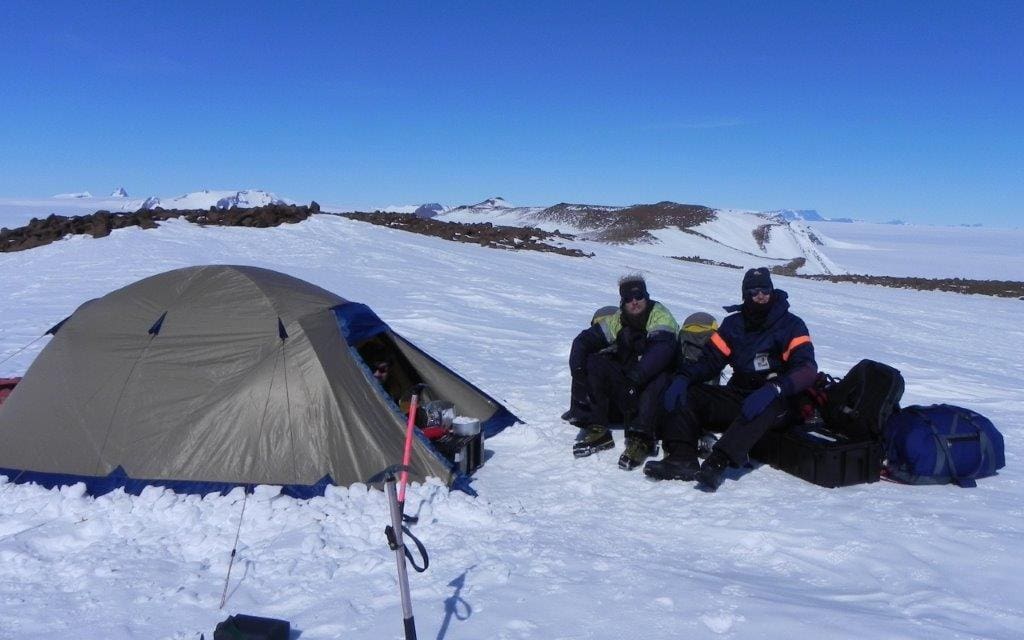
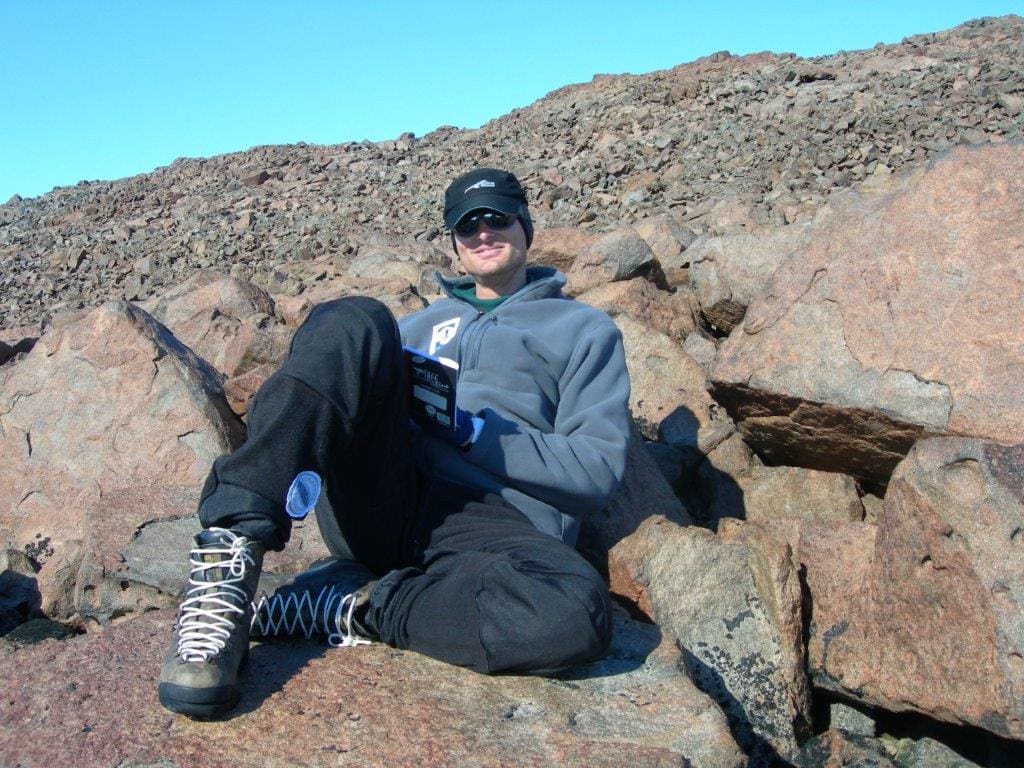
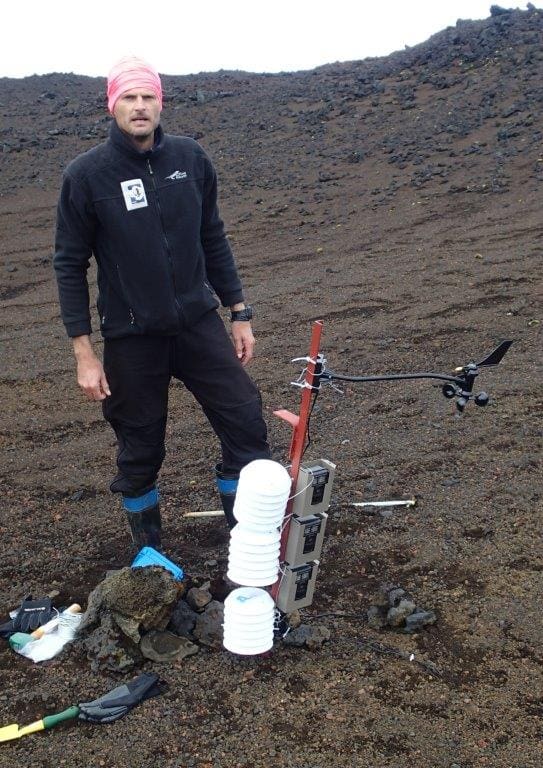
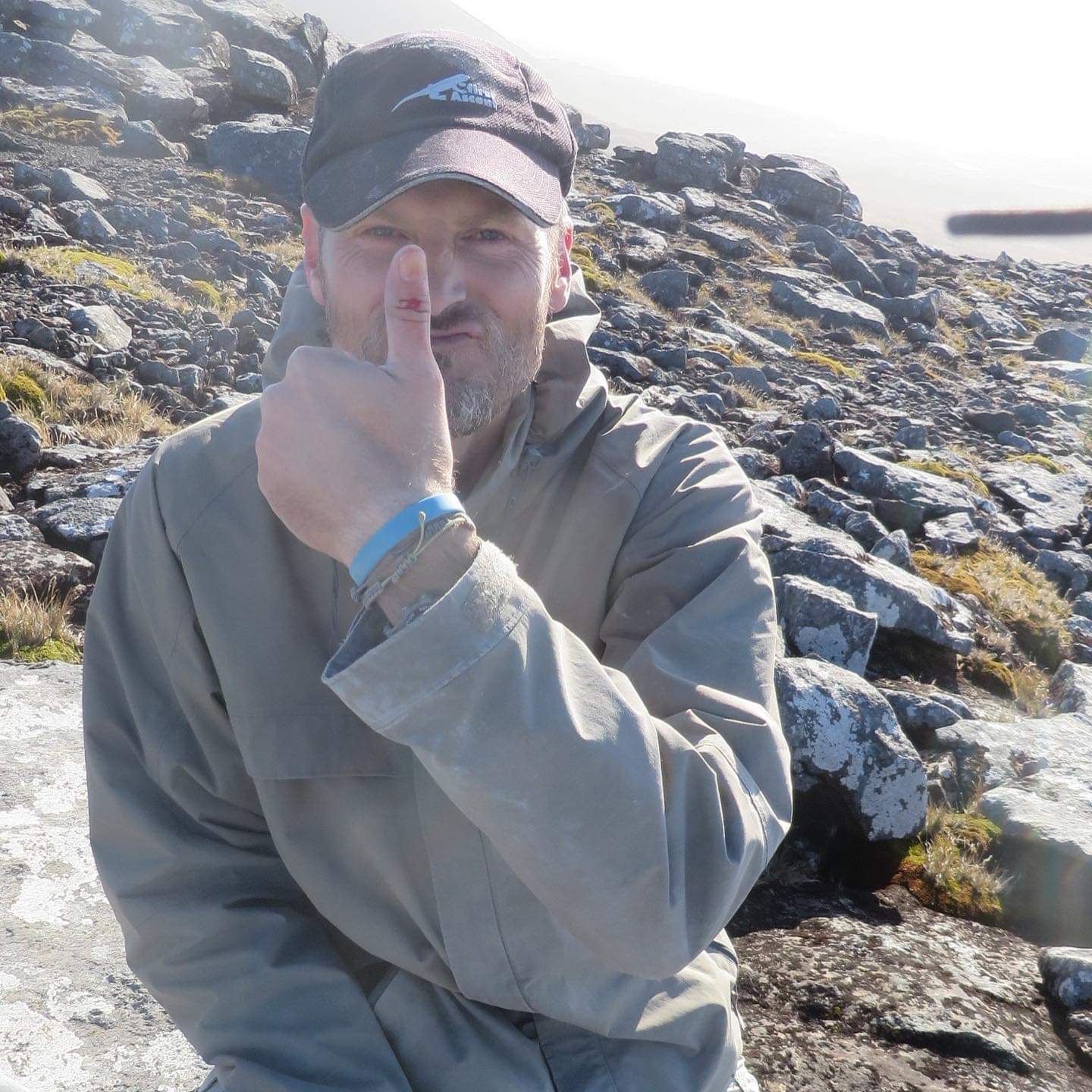 Ja, well there are better paying jobs out there and I guess jobs that give you more status in society (if this is what you are looking for). But I think no other career gives you more freedom to express yourself. Also, unlike what most people think, you don’t need to be particularly clever. Most of the top researchers that I know are just ordinary people that have a passion for what they do and they just put in the time. A willingness to learn (and read), to explore, and not be scared of new things are all you need. Science also allows you to break free from stereotypes and permits (actually insists) you to be who you are. And the rewards are amazing. To see your students graduate and go on to do wonderful things (and be great in their jobs) and to meet truly inspiring and interesting people are way more rewarding I think. And even though it seems that every academic in the universe is perpetually broke you can make a decent living from being an academic. However more importantly, given the flexibility a lot of us enjoy, you can still be there for your family when they need you, and you can always count on a fellow field researcher to buy you a beer.
Ja, well there are better paying jobs out there and I guess jobs that give you more status in society (if this is what you are looking for). But I think no other career gives you more freedom to express yourself. Also, unlike what most people think, you don’t need to be particularly clever. Most of the top researchers that I know are just ordinary people that have a passion for what they do and they just put in the time. A willingness to learn (and read), to explore, and not be scared of new things are all you need. Science also allows you to break free from stereotypes and permits (actually insists) you to be who you are. And the rewards are amazing. To see your students graduate and go on to do wonderful things (and be great in their jobs) and to meet truly inspiring and interesting people are way more rewarding I think. And even though it seems that every academic in the universe is perpetually broke you can make a decent living from being an academic. However more importantly, given the flexibility a lot of us enjoy, you can still be there for your family when they need you, and you can always count on a fellow field researcher to buy you a beer. 
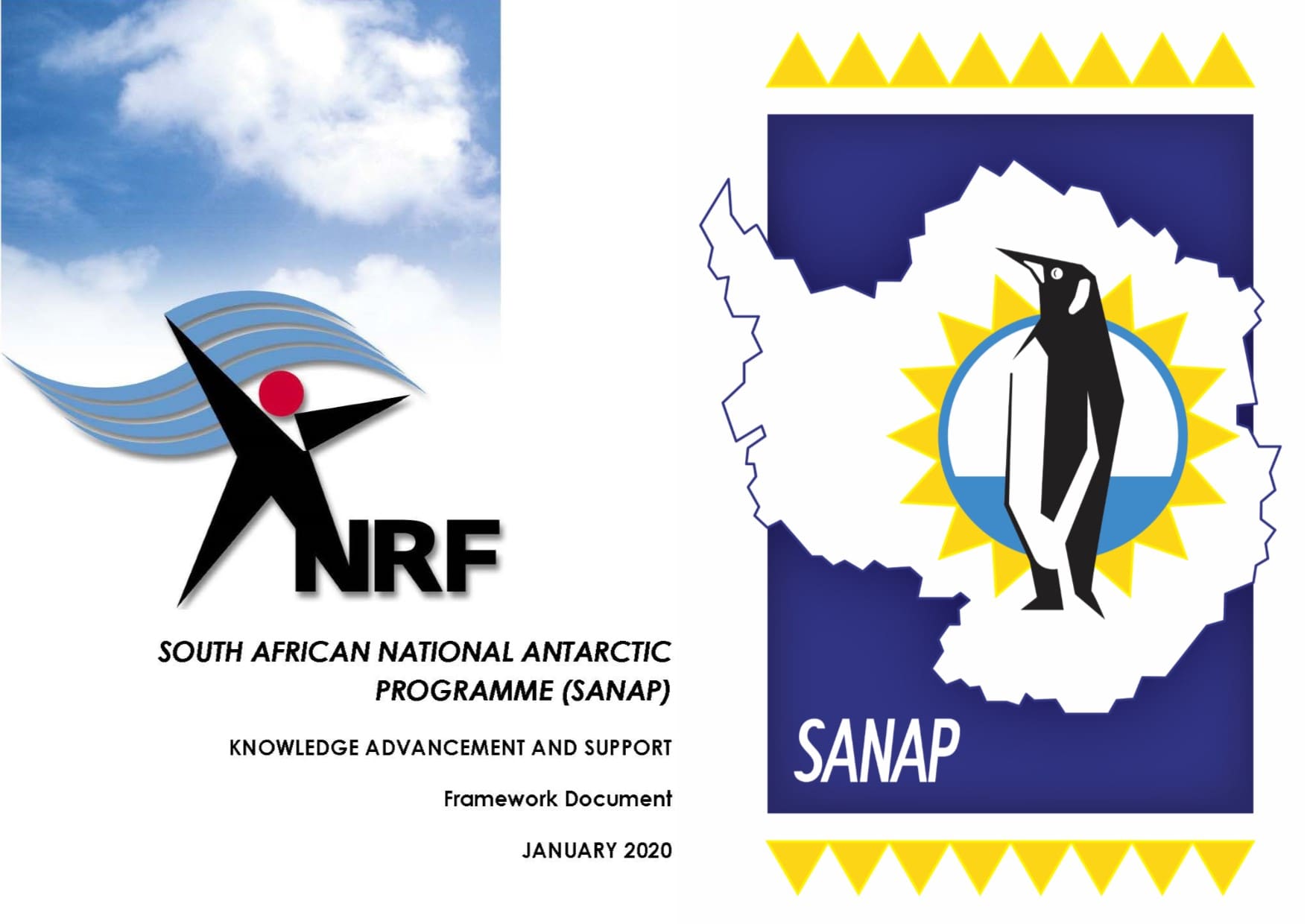 The Call for
The Call for 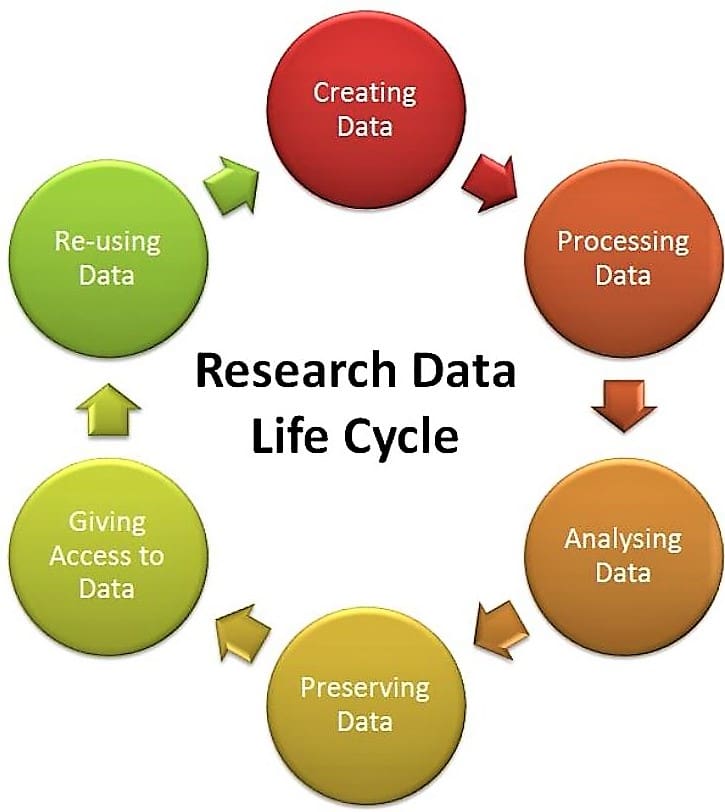 The
The  From the Department of Science and Innovation: “To complement the focus on global infrastructure in South Africa, a
From the Department of Science and Innovation: “To complement the focus on global infrastructure in South Africa, a 
 Trusted Repository for research data and to operationally deploy and maintain data services and virtual research environments. They aim to initiate the establishment of federated data repositories. DIRISA is required to formulate national strategic frameworks for data intensive research and data stewardship
Trusted Repository for research data and to operationally deploy and maintain data services and virtual research environments. They aim to initiate the establishment of federated data repositories. DIRISA is required to formulate national strategic frameworks for data intensive research and data stewardship local organising committee, RDA Technical Advisory Board and RDA Secretariat the
local organising committee, RDA Technical Advisory Board and RDA Secretariat the 
 is a
is a  As part of an international research consortium between the Universities of Aalto and Oulo, Aker Arctic, Det Norske Veritas, Rolls Royce, Wartsila and STX Europe the SVRG performed vibration comfort measurements on board the SA Agulhas II, the new polar supply research vessel. The SA Agulhas II was put to the test during two days of ice-breaking operations in the Bay of Bothnia in Finland during ice-trails as well as a 76-day voyage between Cape Town and Antarctica. Sound levels and vibration comfort will be determined in conjunction with exterior ice conditions and ice-loads on the ship hull in an on-going research project which enables a unique comparison between Arctic and Antarctic conditions.
As part of an international research consortium between the Universities of Aalto and Oulo, Aker Arctic, Det Norske Veritas, Rolls Royce, Wartsila and STX Europe the SVRG performed vibration comfort measurements on board the SA Agulhas II, the new polar supply research vessel. The SA Agulhas II was put to the test during two days of ice-breaking operations in the Bay of Bothnia in Finland during ice-trails as well as a 76-day voyage between Cape Town and Antarctica. Sound levels and vibration comfort will be determined in conjunction with exterior ice conditions and ice-loads on the ship hull in an on-going research project which enables a unique comparison between Arctic and Antarctic conditions. assessment with the associated measurement equipment and software tools to contribute to the international research arena. Annie Bekker host an annual Symposium on the S.A. Agulhas II where international and national stakeholders give new insight and feedback on research. During the symposium students of the SVRG also get the time to present their research. To open the minds of these students and to taught them the necessary skills Annie Bekker make use of expertise from all over the world.
assessment with the associated measurement equipment and software tools to contribute to the international research arena. Annie Bekker host an annual Symposium on the S.A. Agulhas II where international and national stakeholders give new insight and feedback on research. During the symposium students of the SVRG also get the time to present their research. To open the minds of these students and to taught them the necessary skills Annie Bekker make use of expertise from all over the world.
 aspects of signal processing. Professor Brandt up-skilled students from the SVRG in select topics related to data quality control and signal processing. Three days were spent on a deep dive into theory, balanced by practical application. An essential skill of any vibration engineer is “to know how to hit a structure with a hammer”.
aspects of signal processing. Professor Brandt up-skilled students from the SVRG in select topics related to data quality control and signal processing. Three days were spent on a deep dive into theory, balanced by practical application. An essential skill of any vibration engineer is “to know how to hit a structure with a hammer”.




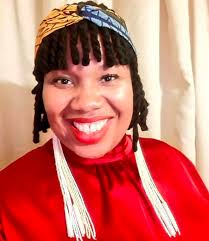 probably the time to break from studies, our first “Saturday Student” in the Mid-Month series is Kolisa Yola Sinyanya or for those who are familiar with Twitter,
probably the time to break from studies, our first “Saturday Student” in the Mid-Month series is Kolisa Yola Sinyanya or for those who are familiar with Twitter, 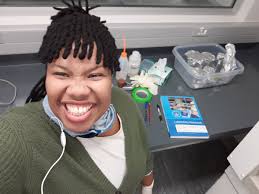 She is a PhD candidate in Oceanography at the University of Cape Town (UCT). Her PhD research is part of a growing body of work that critically examines bio-geochemical cycling in the ocean, particularly regions that are currently under-sampled. The research aims involve exploring phytoplankton community dynamics and microbe-nutrient interactions in the Indian Ocean, including subtropical and Southern Ocean waters. To date, Kolisa has been awarded the Advancing Womxn Fellowship in the Department of Oceanography awarded under the “For womxn by womxn: conducting research in a field in which womxn are in short supply” category of a new initiative at UCT championed by the Office of the Vice-Chancellor. She is one of the researchers who were on 5-week cruise to Marion Island in the Sub-Antarctic Indian Ocean in 2017.
She is a PhD candidate in Oceanography at the University of Cape Town (UCT). Her PhD research is part of a growing body of work that critically examines bio-geochemical cycling in the ocean, particularly regions that are currently under-sampled. The research aims involve exploring phytoplankton community dynamics and microbe-nutrient interactions in the Indian Ocean, including subtropical and Southern Ocean waters. To date, Kolisa has been awarded the Advancing Womxn Fellowship in the Department of Oceanography awarded under the “For womxn by womxn: conducting research in a field in which womxn are in short supply” category of a new initiative at UCT championed by the Office of the Vice-Chancellor. She is one of the researchers who were on 5-week cruise to Marion Island in the Sub-Antarctic Indian Ocean in 2017.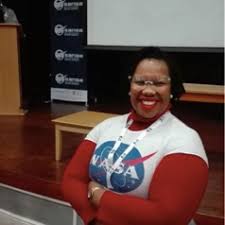 in effective science communication through public speaking, scientific writing and television features. In February of 2020, she presented one of her PhD chapters at Ocean Sciences Meeting in San Diego, USA. Towards the end of 2019, the new
in effective science communication through public speaking, scientific writing and television features. In February of 2020, she presented one of her PhD chapters at Ocean Sciences Meeting in San Diego, USA. Towards the end of 2019, the new 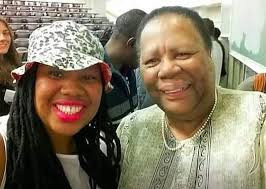 She has taken part in several science communication activities, including
She has taken part in several science communication activities, including 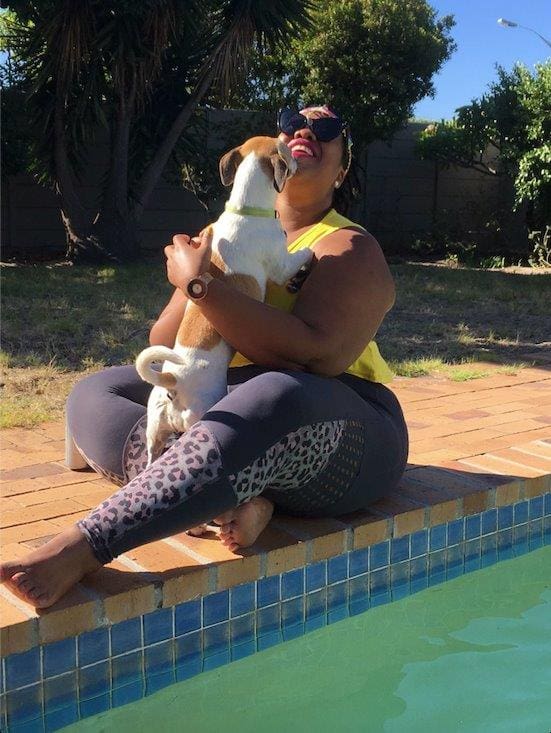

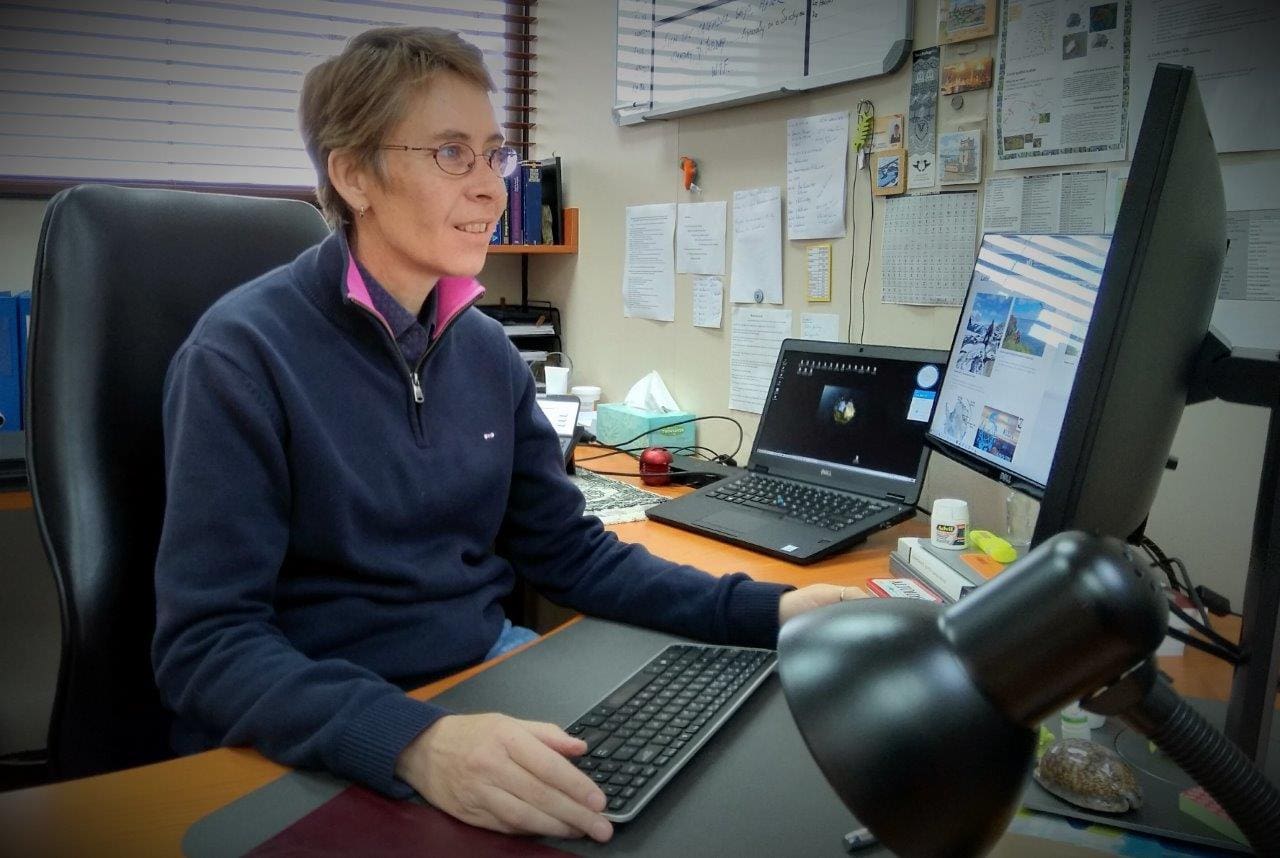 and became a
and became a 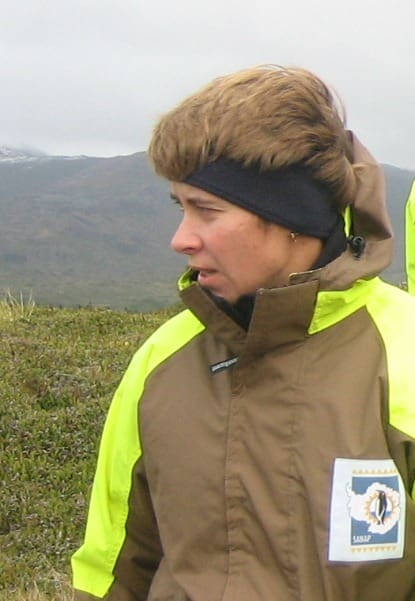 Islands since 2004 and have been fortunate to work with some of the legends as well as bright upcoming researchers (then students, now fully established and leading their own research groups). For my sins, I was appointed as Chief shore-based Scientist in 2006 (the first time that a woman held this position), and managed to get all people to relevant huts on time, even though we almost had to put together a rescue party to retrieve Valdon Smith and Sarette Slabber from Mixed Pickle (typical Marion Island bad weather meant that they could not walk over Azorella Kop). Thankfully the weather cleared, and all shore-based people made it back to the SA Agulhas I.
Islands since 2004 and have been fortunate to work with some of the legends as well as bright upcoming researchers (then students, now fully established and leading their own research groups). For my sins, I was appointed as Chief shore-based Scientist in 2006 (the first time that a woman held this position), and managed to get all people to relevant huts on time, even though we almost had to put together a rescue party to retrieve Valdon Smith and Sarette Slabber from Mixed Pickle (typical Marion Island bad weather meant that they could not walk over Azorella Kop). Thankfully the weather cleared, and all shore-based people made it back to the SA Agulhas I.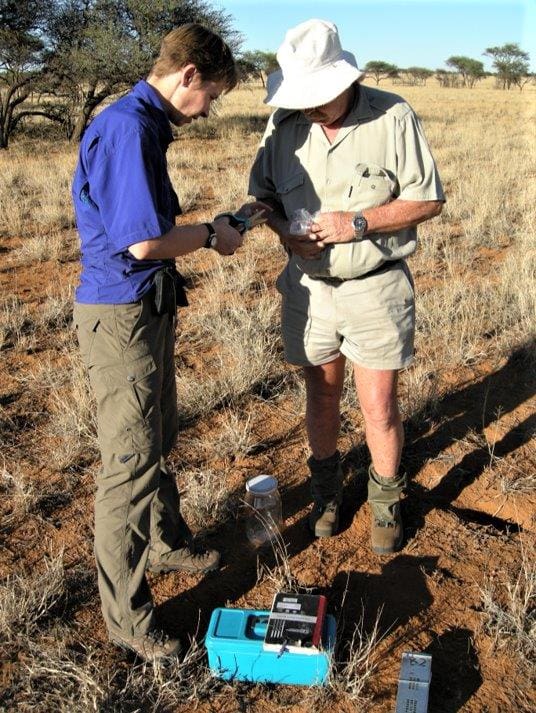 flowers and pollen, and how do they get back to their hives? Are they really all female? Why are some species so successful while others are continuously threatened and faced with extinction; especially considering that our world is changing much faster than ever before?
flowers and pollen, and how do they get back to their hives? Are they really all female? Why are some species so successful while others are continuously threatened and faced with extinction; especially considering that our world is changing much faster than ever before? 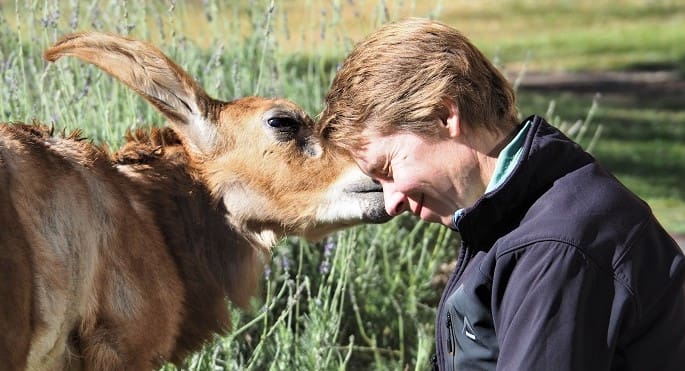
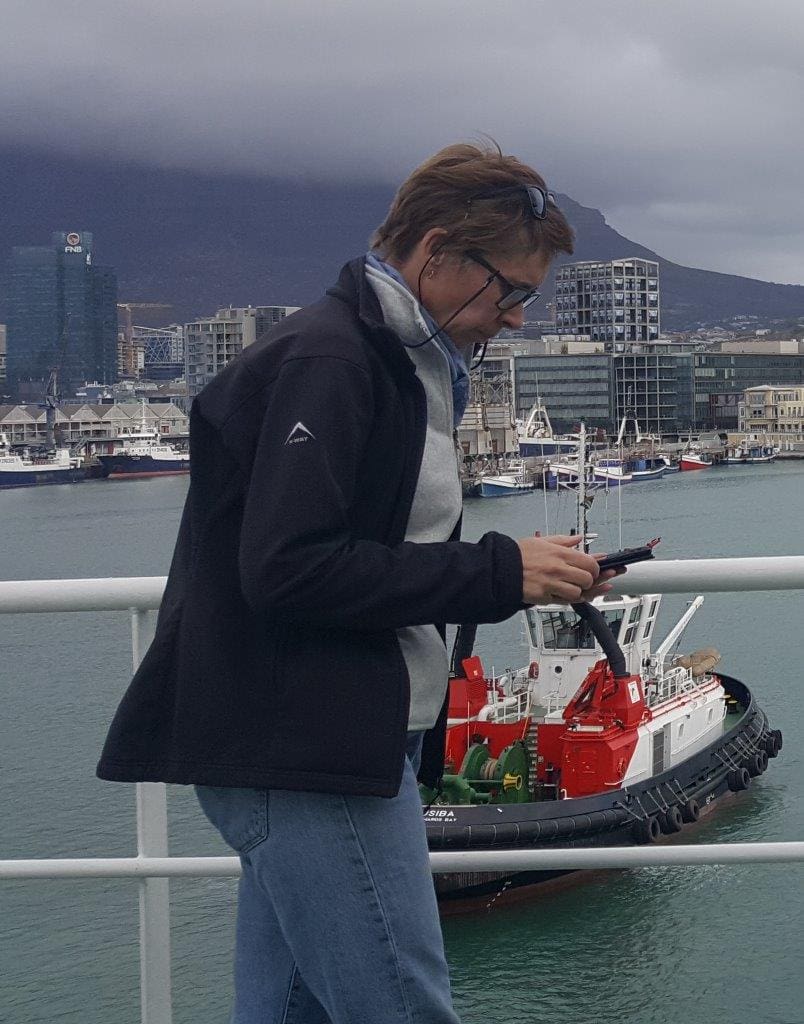 or others impose on us; and it is crucial that we break through these (non-real) boundaries. STEM fields are a case in hand. This is especially true for woman, who traditionally were considered homemakers or child-carers. In STEM specifically, fields such as mathematics, physics and engineering, and traditionally more field-based disciplines such as zoology, botany, or oceanography, are seen as more suited to men (either because women were not traditionally considered as analytically strong, capable to work in the field, or for that matter, be away from home for any period of time). It is critical that any person (both men and women) should carefully consider what they enjoy, what their specific strengths are (be that a STEM career for a woman, or as a child carer / homemaker for a man), and then pursue that with all their strength and passion. Personally, I was initially directed into a field that I had no interest in (because I could not answer questions asked regarding where I would work if my husband lived in a small town), and from a personal perspective I strongly urge and support woman that want to step out of the “beaten track”, i.e., what is typically expected from you by society, and follow what they are passionate about.
or others impose on us; and it is crucial that we break through these (non-real) boundaries. STEM fields are a case in hand. This is especially true for woman, who traditionally were considered homemakers or child-carers. In STEM specifically, fields such as mathematics, physics and engineering, and traditionally more field-based disciplines such as zoology, botany, or oceanography, are seen as more suited to men (either because women were not traditionally considered as analytically strong, capable to work in the field, or for that matter, be away from home for any period of time). It is critical that any person (both men and women) should carefully consider what they enjoy, what their specific strengths are (be that a STEM career for a woman, or as a child carer / homemaker for a man), and then pursue that with all their strength and passion. Personally, I was initially directed into a field that I had no interest in (because I could not answer questions asked regarding where I would work if my husband lived in a small town), and from a personal perspective I strongly urge and support woman that want to step out of the “beaten track”, i.e., what is typically expected from you by society, and follow what they are passionate about. I am currently involved in a number of larger projects which aim to understand how species (individuals / populations) respond to change. One such project is on sub-Antarctic Marion Island (funded through the South African National Antarctic Programme), where we are assembling the full genomes of a number of macroinvertebrate species, with the ultimate aim to understand genes under selection, and how biotic and abiotic factors shape the genetic diversity on oceanic islands. In South Africa, and in collaboration with national (SANBI) and international partners (an NSF/NRF funded project), we are investigating how reptile species adapt to changing and transformed landscapes, and what the downstream impacts are on their genes, morphology and behaviour. Across the African continent, and in collaboration with the Research Centre in Biodiversity and Genetic Resources (Portugal), we are documenting the spatial genetic patterns in a number of economically important larger antelope species (such as roan- and sable antelope); our work here directly informs South African policies on translocations.
I am currently involved in a number of larger projects which aim to understand how species (individuals / populations) respond to change. One such project is on sub-Antarctic Marion Island (funded through the South African National Antarctic Programme), where we are assembling the full genomes of a number of macroinvertebrate species, with the ultimate aim to understand genes under selection, and how biotic and abiotic factors shape the genetic diversity on oceanic islands. In South Africa, and in collaboration with national (SANBI) and international partners (an NSF/NRF funded project), we are investigating how reptile species adapt to changing and transformed landscapes, and what the downstream impacts are on their genes, morphology and behaviour. Across the African continent, and in collaboration with the Research Centre in Biodiversity and Genetic Resources (Portugal), we are documenting the spatial genetic patterns in a number of economically important larger antelope species (such as roan- and sable antelope); our work here directly informs South African policies on translocations.






